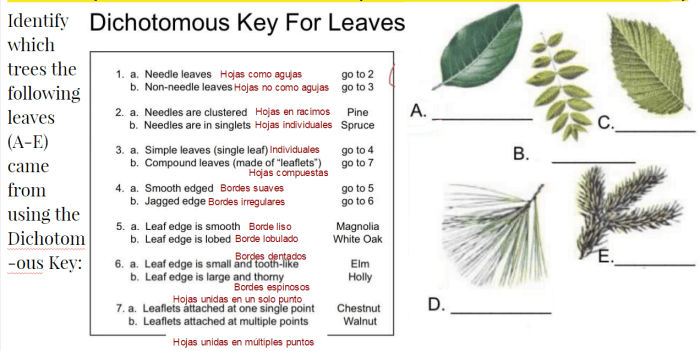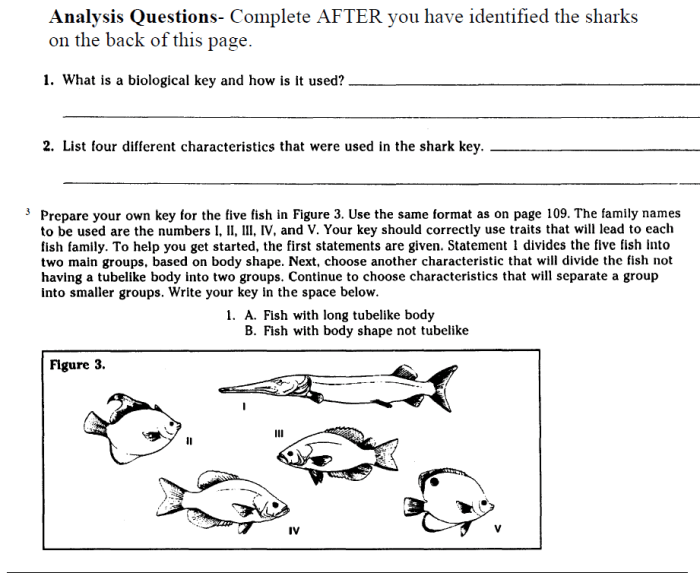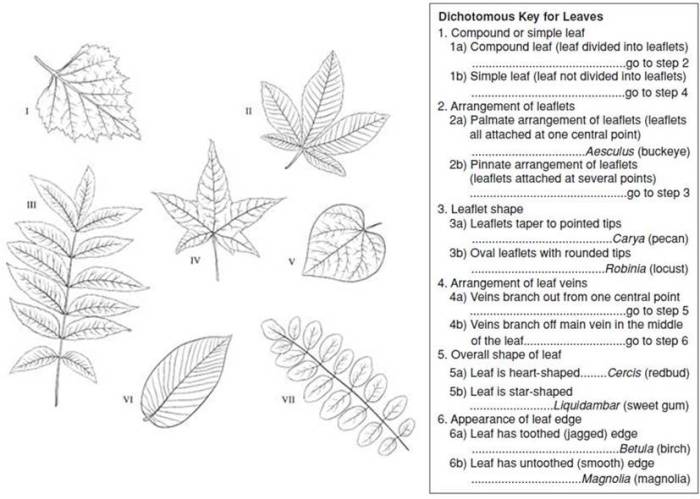Introducing the Dichotomous Key Worksheet Answer Key, a comprehensive guide that empowers you to unlock the secrets of organism identification with precision and efficiency. Delving into the intricacies of dichotomous keys, this resource provides a structured approach to classifying and identifying organisms, making it an invaluable tool for scientists, students, and nature enthusiasts alike.
Through a journey of discovery, we will explore the fundamental principles of dichotomous keys, their applications in various scientific disciplines, and the limitations that shape their usage. Prepare to embark on an enlightening exploration of the dichotomous key worksheet answer key, a gateway to unraveling the complexities of the natural world.
Dichotomous Key Definition: Dichotomous Key Worksheet Answer Key

A dichotomous key is a tool used for the identification of organisms by presenting a series of choices between two contrasting characters. Each choice leads to another set of choices, and by following the key, one can determine the identity of the organism.
Dichotomous keys are widely used in scientific classification, particularly in the field of taxonomy. They provide a systematic and efficient way to identify organisms based on their observable characteristics.
Key Characteristics of Dichotomous Keys
- Succinct and clear:Dichotomous keys are designed to be concise and easy to understand, with each choice clearly stated.
- Binary choices:Each step in the key presents a choice between two contrasting characters, allowing for a straightforward identification process.
- Sequential arrangement:The choices are arranged in a logical sequence, leading the user to the correct identification.
- Mutually exclusive:The characters used in the key are mutually exclusive, meaning that an organism cannot possess both characters.
Constructing a Dichotomous Key
To construct a dichotomous key, follow these steps:
- Select diagnostic characters:Choose characters that are easily observable and that can be used to distinguish between different organisms.
- Create couplets:Each step in the key consists of a couplet, which presents a choice between two contrasting characters.
- Arrange couplets sequentially:Organize the couplets in a logical sequence, starting with the most general characters and moving to more specific ones.
- Test the key:Use the key to identify known organisms to ensure its accuracy and efficiency.
Using Dichotomous Keys
To use a dichotomous key:
- Start at the beginning:Begin by reading the first couplet and choose the character that best describes the organism.
- Follow the key:Continue through the key, following the choices that match the organism’s characteristics.
- Identify the organism:Once you reach a couplet that has only one choice, the organism has been identified.
Variations of Dichotomous Keys
There are different types of dichotomous keys, including:
- Indented keys:Use indentation to show the hierarchical structure of the key.
- Bracketed keys:Use brackets to group related choices.
Each type has its advantages and disadvantages, and the choice of key depends on the specific application.
Applications of Dichotomous Keys, Dichotomous key worksheet answer key
Dichotomous keys are widely used in various fields, including:
- Biology:Identifying species of plants, animals, and microorganisms.
- Ecology:Determining the composition of plant and animal communities.
- Medicine:Diagnosing diseases based on symptoms.
Limitations of Dichotomous Keys
Dichotomous keys have some limitations:
- May not be applicable to all organisms:Keys are typically designed for a specific group of organisms and may not be suitable for identifying organisms outside that group.
- Can be difficult to construct:Creating an accurate and efficient key requires careful selection of characters and a logical arrangement of couplets.
- May not be able to account for variation:Organisms may exhibit variation in their characteristics, which can make identification using a dichotomous key challenging.
Q&A
What is a dichotomous key?
A dichotomous key is a tool used to identify organisms by presenting a series of paired statements or questions. Each statement or question describes two contrasting characteristics of the organism being identified.
How do I use a dichotomous key?
To use a dichotomous key, start at the top of the key and read the first pair of statements or questions. Choose the statement or question that best describes the organism you are trying to identify, and then follow the arrow or number that corresponds to that statement or question.
Continue following the arrows or numbers until you reach a terminal statement or question, which will provide the identification of the organism.
What are the limitations of dichotomous keys?
Dichotomous keys can be limited in their ability to identify organisms that have intermediate or variable characteristics. Additionally, they can be difficult to use for identifying organisms that are closely related or that have similar characteristics.

